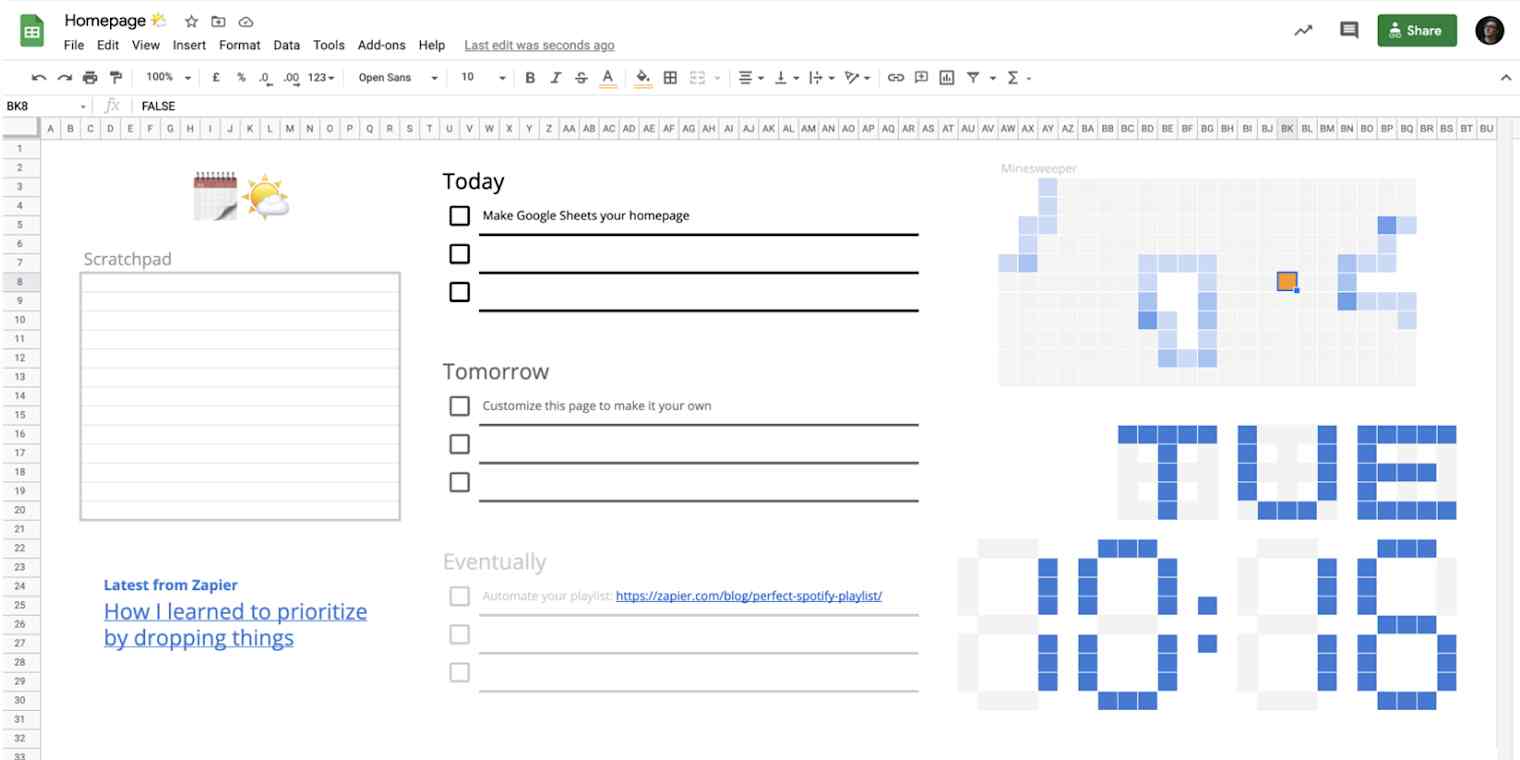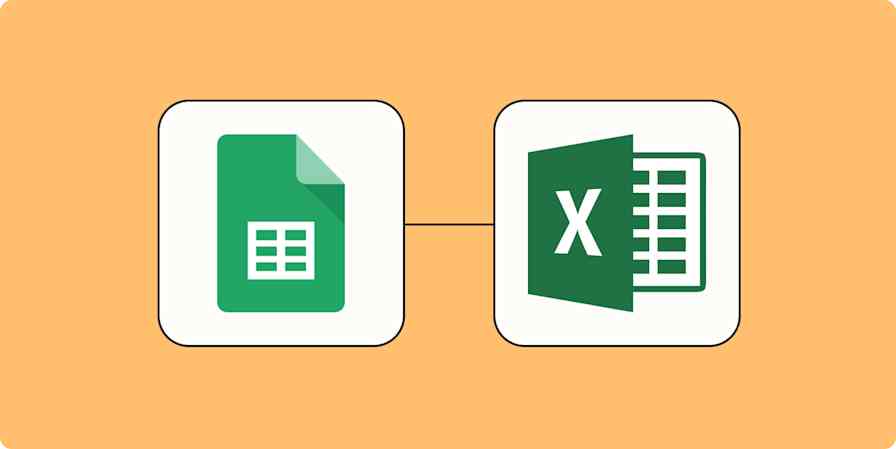App tips
5 min readWhy you should use Google Sheets as your browser homepage
How to create a custom browser homepage with Google Sheets
By Tyler Robertson · February 12, 2021

Get productivity tips delivered straight to your inbox
We’ll email you 1-3 times per week—and never share your information.
mentioned apps
Related articles
Improve your productivity automatically. Use Zapier to get your apps working together.






